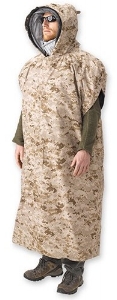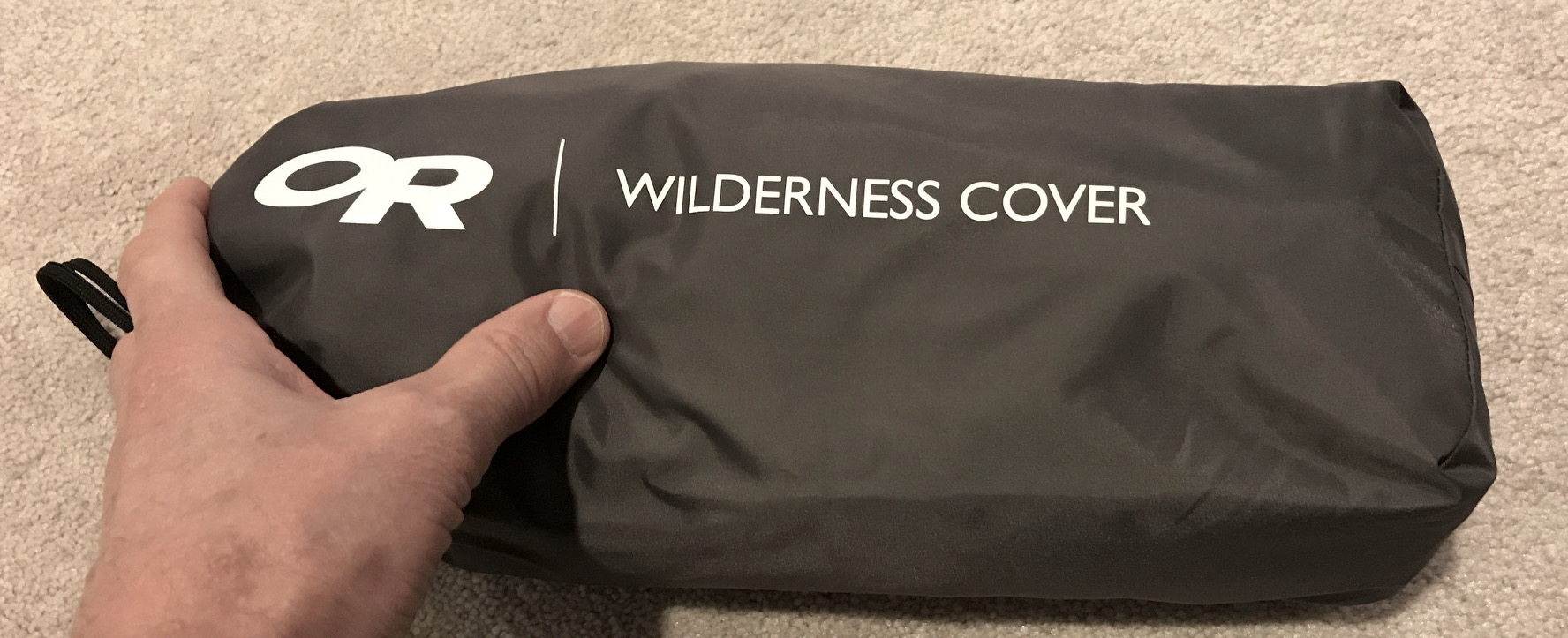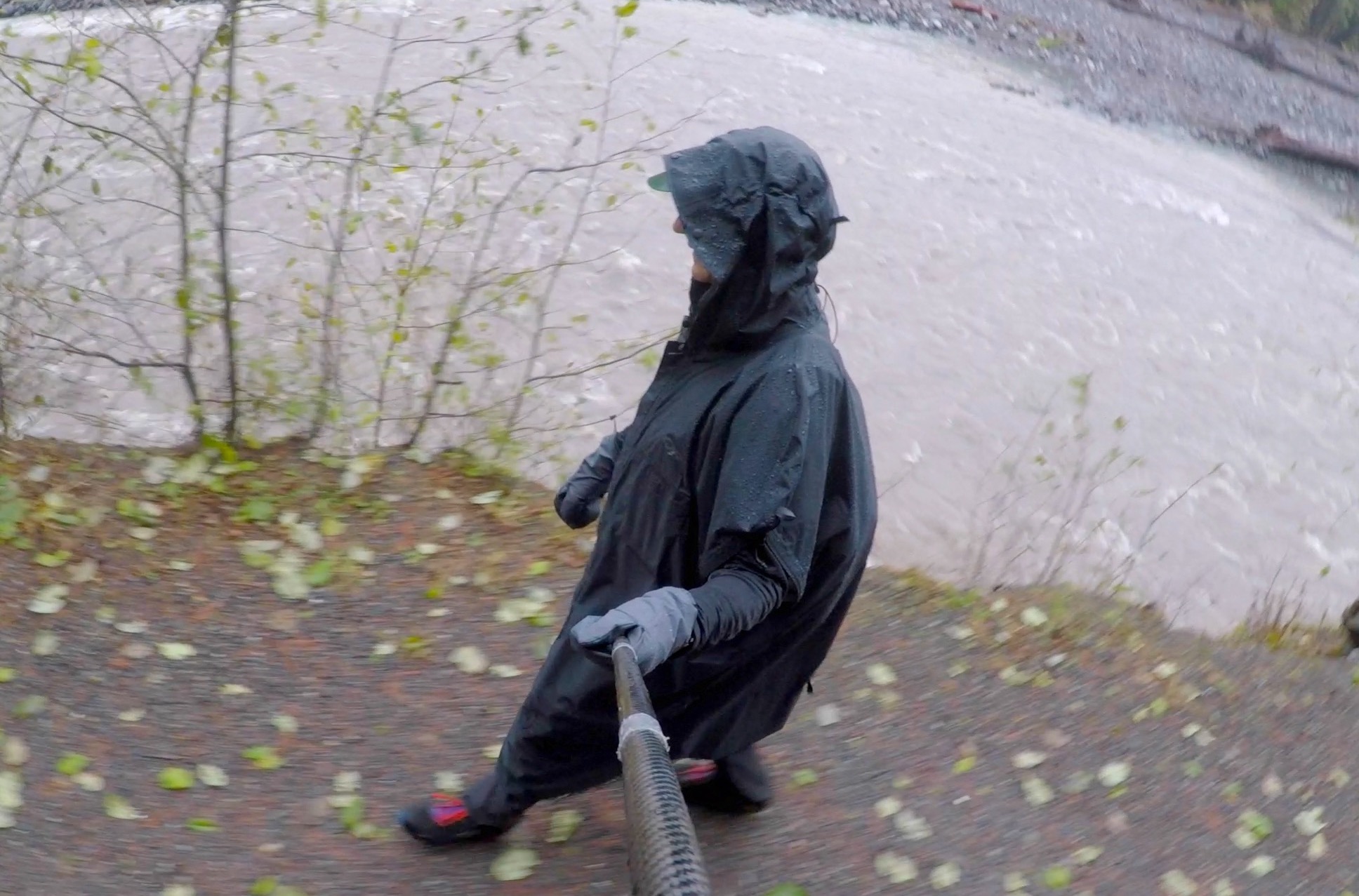Outdoor Research Wilderness Cover review
The discontinued OR "Wallcreeper"
A year or two back I saw a sale on the Outdoor Research Wallcreeper Gore-Tex poncho/bivy for $200, reduced from over $700 on the OR military site. I decided to take a chance and tried to order it, but alas, on checkout the message read "out of stock." Then, behold, OR released their "Wilderness Cover" this past year, essentially the same as the Wallcreeper but made out of OR's Ventia (2.5L, 100% nylon, 70D ripstop PU coating) material, offered at $199. I picked one up in black and have used it and packed it this past season on enough occasions to render an opinion.
This is an odd piece of kit for sure, and one must determine if it fits into their own style of packing. I deem it relatively heavy at 24 0zs/680G so it doesn't particularly fall into a UL category; but then, as is true with many things, it depends on the usage. It also packs fairly large, another downside. However, these same qualities can also make it an appropriate choice. For instance, I have a fairly pricey Cuben WPB custom bivy made by Borah Gear that I ensure has a good ground sheet under it to protect the fairly fragile floor. With the Wilderness Cover (WC) I have no qualms just spreading it out over any surface with no concerns of protecting the fabric, because the Ventia is fairly cheap and rugged. Plus I can wear the WC as rain gear, which I tested extensively on an all day jaunt in steady soaking rains. I began that day with much skepticism, as the WC is quite long (fully opened, 72" X 64.5") to act as a bivy so the bottom must be cinched up at the waist for ambulation. I was pleasantly surprised that using it in this poncho configuration offered no resistance to high stepping or any leg reaching moves during an on trail climb to a back country lake. Plus one can see from the video screen grabs that it reaches down to calf level (I am 6' tall) so also offers substantial protection to the upper legs. However, it doesn't allow the ventilation options like a regular poncho unless unzipped in the front, which is counter productive in a steady rain.
The packed size of the OR Wilderness Cover
I don't put much stock in WPB fabrics any more, as anyone who has spent considerable time in drenching rain with any miracle jacket soon finds out that you eventually get wet anyway from buildup of internal moisture....I have found ventilation is the key, which is why I like ponchos in certain conditions. With the WC I wore a fleece underneath on that late November jaunt, and aside from my exposed arms did not notice clamminess nor was cognizant of any wetness related discomfort. However, when I got home and spread out the WC to dry, there was moisture evident on the interior of the fabric. This may become a factor if using the WC as rain gear all day and then transitioning to bivy mode. However, all gear offers a compromise in some aspects and overall I was quite satisfied with the WC in poncho mode, which also has a wide coverage hood. I found that wearing a cap underneath helped keep the hood from getting too low over my eyes, as the hood design is large enough to cover one's head and face in bivy mode. I also found that in poncho mode the WC could easily accommodate my day pack, although I went through some contortions to get it on over the pack.
The OR Wilderness Cover in use as a fully enclosed bivy bag
In bivy mode the WC offers a few advantages, in that in fine weather one can just open it completely up like a blanket and just use it as a ground sheet. If the temperature drops, the wind intensifies or any moisture comes into play, then simply zip it up, including the arm slots, and close the bottom. The hood can completely cover the head with a convenient snap that will keep it in place. Because my head was outside the confines of this bivy mode when I slept in it, my breath did not condense inside and I noticed no buildup of moisture; however, the material does not have the best "hand" and feels rather clammy against the skin.
The Wilderness Cover as rain gear
I see the Wilderness Cover serving me well in particular circumstances, such as alpine bivys on scree and uneven terrain. I have a few trips planned this year where I will be sleeping above treeline on the flanks of Mt. Rainier (see the "35 Years in MRNP" pulldown) with sunset/sunrise and night photography in mind. With the WC I can stay in my bag and bivy, even sitting up, utilizing the arm slots to tend the camera but staying snug inside (I plan on using a ZRest pad versus a blow up). I have also packed the WC on day hikes as emergency shelter or rain gear.
Over the decades I have purchased gear with high hopes but soon find out limitations when I hit the trail, sometimes completely discarding a hopeful piece of kit when these limitations far outweigh usefulness. I bought the Wilderness Cover with skepticism, anticipating that I would find this to be so. However, despite being fairly heavy and bulky, in some circumstances this has proven to be very handy, and perhaps in 2018 I will get even more use out of it with higher altitude bivys. As for emergency gear, the fact that the WC not only can be used in different configurations...poncho, bivy and tarp (it has tie outs for this purpose)....I find its actual real world usefulness as a poncho and bivy worth the space and weight penalty....sometimes. Consider that I can bring along a WPB bivy (9 ozs) and tarp with stakes (4 ozs) for half the weight and space (but I would still need rain gear), and one can see that careful consideration is required based on personal usage before laying out the cash for a piece of kit like the Wilderness Cover. However, I can attest to its efficacy as both rain gear and bivy.
The Wilderness Cover can accommodate smaller packs





